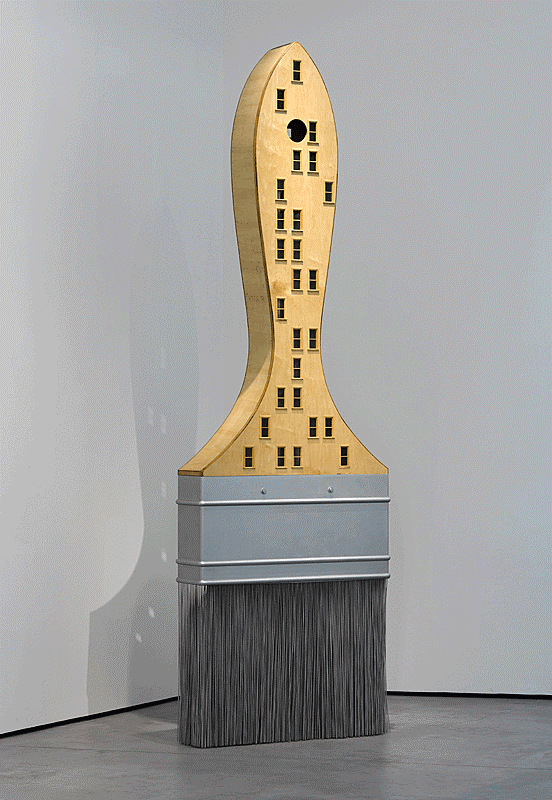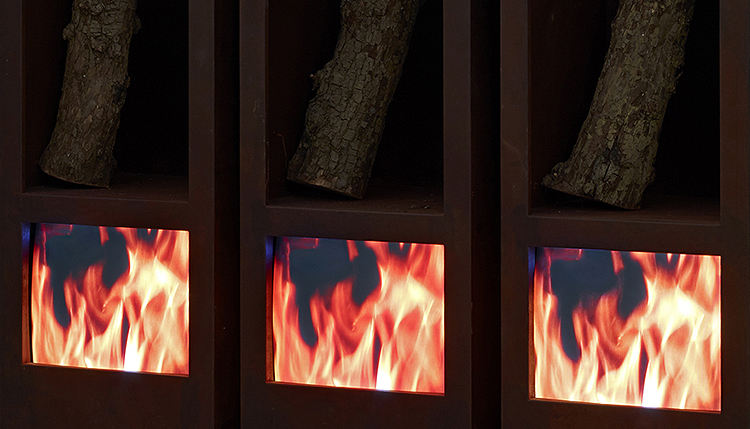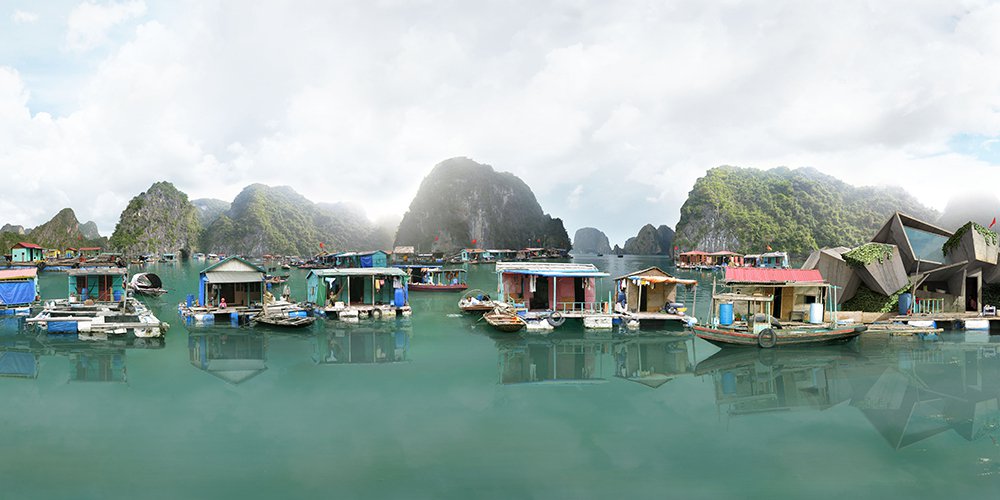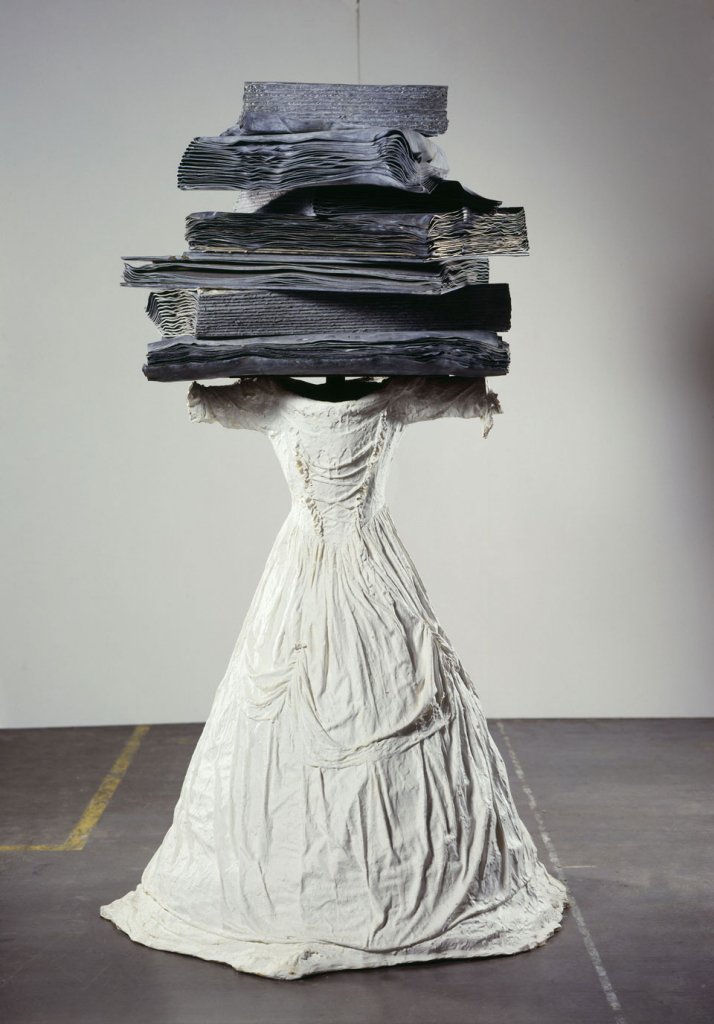
- Artist:
- Dennis Oppenheim
- Date:
- 2005
- Technique:
- Wood, steel structure, aluminium plate and welded rods
- Dimensions:
- 405 x 122 x 30 cm
- Origin:
- Es Baluard Museu d'Art Contemporani de Palma, Ajuntament de Palma collection long-term loan
- Registration number:
- 573
- Exposed:
- No
The sculpture, constructed in wood with a steel and aluminium structure, rises up like a skyscraper in a megapolis typical of the early 21st century. Because of its large dimensions, the piece forces us to observe it from below, raising our gaze and emulating the gesture we make to look at the buildings in big cities. The artist transmits the same optical and corporal sensation to us, playing with the deception of our sensitive memory, to reveal to us in turn, that this is no building, but a paintbrush of huge proportions. A brush, with a light wooden handle, hyper-dimensioned and situated in an impossible position for a normal paintbrush.
The artist disturbs us with this Brush building (2005), de-contextualizing the object and hybridising it, offering us new gazes and reflections on its very function, even more so – if such a thing were possible – because of the change of scale. The largening of the everyday object, a resource used with different functions by the world of pop, is a resource of maturity in the work of Dennis Oppenheim. This enlargement of the real measurements of the objects that surround us emphasises the function of the piece and indicates unexpected or grotesque aspects of the situations the works create.
Oppenheim lays before us an interesting game of scales with this sculpture because, whilst the paintbrush, as a basic, sustaining element, has monumental dimensions, the windows that populate it are small, reminding us of the tiny homes typical of contemporary cities.
I.LL.
Dennis Oppenheim lived and worked in New York for most of his life. A student at the California College of Arts and Crafts with a master’s degree from Stanford University, he developed an eclectic career in which heterogeneous phases succeeded one another. His early works are related to Land Art and later to performance, body art and video creation. In the ‘eighties, he worked with what he called machine pieces and from the ‘nineties on, he focussed on a sculptural line of redefinition of everyday objects, produced on a large scale, thus merging sculpture and architecture.
I.LL.


